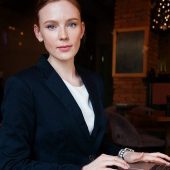A national shortage of lorry drivers has prompted some – women included – to consider a career change to gain an HGV licence. Trucking has entered the national consciousness and the driver shortfall means there’s never been a better time to steer towards a new career. But you don’t have to get behind the wheel to engineer new opportunities, the possibilities are endless. If you’re considering a change of direction, we show you the way to shift gear.
- Assess your interests, values, and skills. Review past successful roles, volunteer work, projects and jobs to identify preferred activities and levels of expertise. Determine whether your core values and skills are addressed through your current career.
- Brainstorm ideas for career alternatives. Research career options and discuss your core values and skills with friends, family and networking contacts. If you’re having difficulty coming up with ideas, consider meeting with a career counsellor for professional advice.
- Check out job options. Conduct a preliminary comparative evaluation of several fields to identify a few targets for in-depth research. You can find a wealth of information online simply by Googling the jobs that interest you.
- Set up a job shadow (or two). Shadow professionals in fields of primary interest to observe work first hand. Spend anywhere from a few hours to a few days job-shadowing people who have roles that interest you.
- Take a class. Investigate educational opportunities that would bridge your background to your new field. Consider taking an evening course at a local college or an online course.
- Upgrade your skills. Look for ways to develop new skills in your current job which would pave the way for a change. If your company offers in-house training, sign up for as many classes as you can.
And if you’re still deliberating, a recent survey of career changers, carried out by Joblist, found that those who had switched jobs were overwhelmingly happy with their decision. Those who took the plunge expressed a range of positive outcomes, including:
Happier – 77 per cent
More satisfied – 75 per cent
More fulfilled – 69 per cent
Less stressed – 65 per cent
What are you waiting for?
Need to talk to someone about a career change? We have a number of career coaches who could be right for you. Talk to us first.










